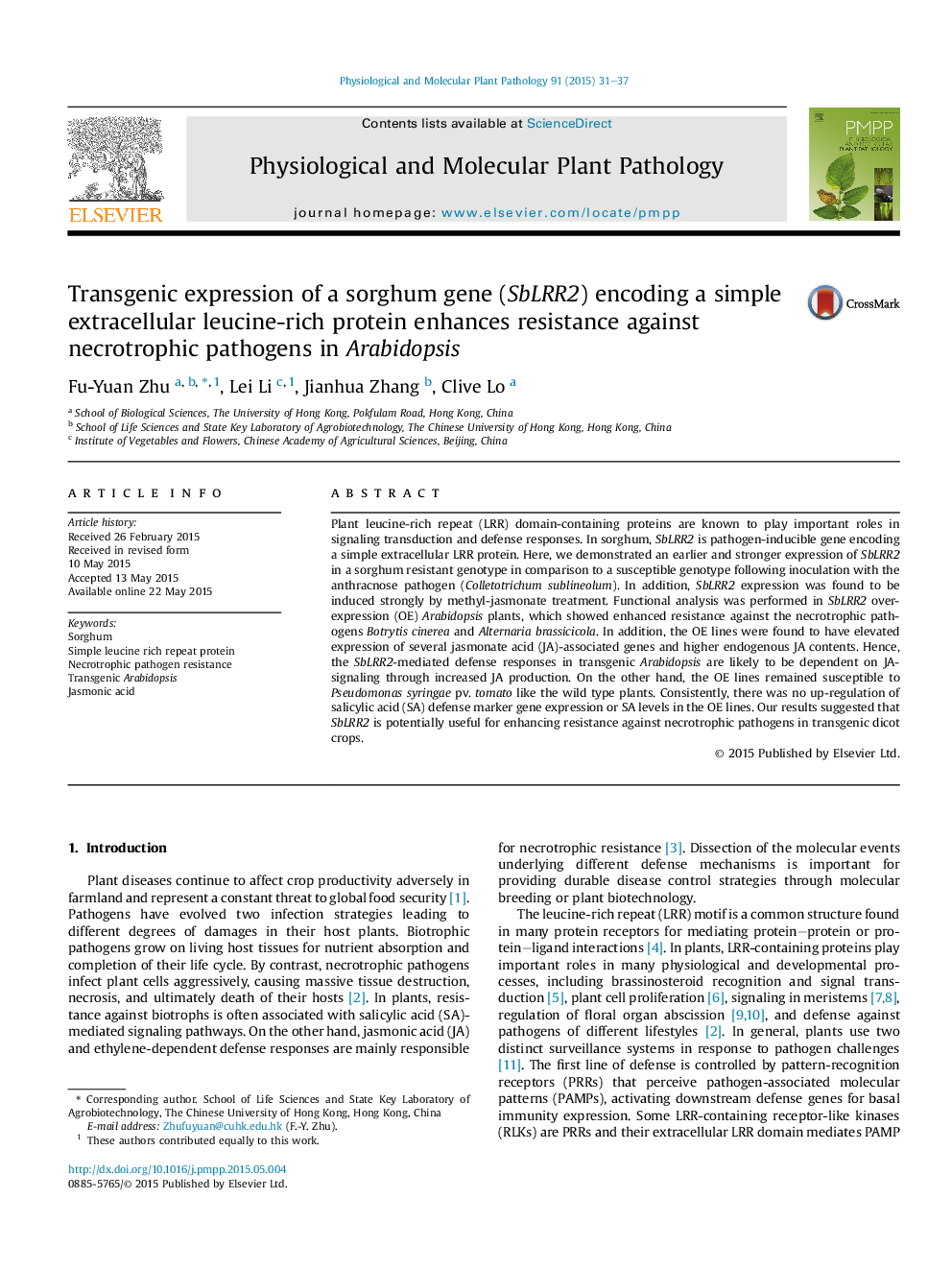| Article ID | Journal | Published Year | Pages | File Type |
|---|---|---|---|---|
| 2836260 | Physiological and Molecular Plant Pathology | 2015 | 7 Pages |
•SbLRR2 expression is inducible by pathogen and methyl-jasmonate in sorghum seedlings.•SbLRR2-overexpressing Arabidopsis showed enhanced resistance against necrotrophs.•JA production and signaling may be involved in the SbLRR2-mediated resistance.
Plant leucine-rich repeat (LRR) domain-containing proteins are known to play important roles in signaling transduction and defense responses. In sorghum, SbLRR2 is pathogen-inducible gene encoding a simple extracellular LRR protein. Here, we demonstrated an earlier and stronger expression of SbLRR2 in a sorghum resistant genotype in comparison to a susceptible genotype following inoculation with the anthracnose pathogen (Colletotrichum sublineolum). In addition, SbLRR2 expression was found to be induced strongly by methyl-jasmonate treatment. Functional analysis was performed in SbLRR2 over-expression (OE) Arabidopsis plants, which showed enhanced resistance against the necrotrophic pathogens Botrytis cinerea and Alternaria brassicicola. In addition, the OE lines were found to have elevated expression of several jasmonate acid (JA)-associated genes and higher endogenous JA contents. Hence, the SbLRR2-mediated defense responses in transgenic Arabidopsis are likely to be dependent on JA-signaling through increased JA production. On the other hand, the OE lines remained susceptible to Pseudomonas syringae pv. tomato like the wild type plants. Consistently, there was no up-regulation of salicylic acid (SA) defense marker gene expression or SA levels in the OE lines. Our results suggested that SbLRR2 is potentially useful for enhancing resistance against necrotrophic pathogens in transgenic dicot crops.
